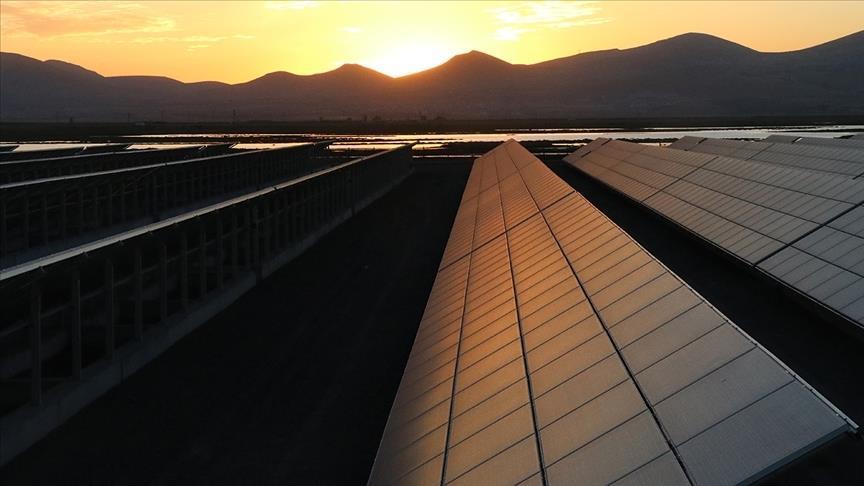New renewable power capacity additions this year are forecast to rise by 290 gigawatts globally, surpassing the previous all-time high set last year, a new report from the International Energy Agency (IEA) found Wednesday.
The record installations come despite the rising costs of key materials used to make solar panels and wind turbines, according to the IEA's annual Renewables Market Report.
The agency predicts that by 2026, global renewable electricity capacity will rise more than 60% from 2020 levels to over 4,800 gigawatts, which is equivalent to the current total global power capacity of fossil fuels and nuclear combined.
Renewables are set to account for almost 95% of the increase in global power capacity through 2026, with solar PV alone providing more than half, according to the report.
The amount of renewable capacity to be added between 2021 and 2026 is expected to be 50% higher than from the period from 2015 to 2020, with the increase driven by stronger support from government policies and more ambitious clean energy goals announced before and during the COP26 Climate Change Conference, according to the IEA.
'This year's record renewable electricity additions of 290 gigawatts are yet another sign that a new global energy economy is emerging,' the IEA Executive Director, Fatih Birol, was quoted as saying in the report. 'The high commodity and energy prices we are seeing today pose new challenges for the renewable industry, but elevated fossil fuel prices also make renewables even more competitive.'
-Four markets account for 80% of expansion
The report expects increased renewables growth in all regions compared with the 2015-2020 period, with China as the global leader in the volume of capacity additions.
China, the biggest emitter in the world annually, is expected to reach 1,200 gigawatts of total wind and solar capacity by 2026, which would be four years earlier than its current target of 2030, according to the report.
The IEA forecasts that India is set to come top in terms of the rate of growth by doubling new installations compared with 2015-2020.
Renewable deployments in Europe and the US are also on track to speed up significantly from the previous five years.
These four markets together account for 80% of renewable capacity expansion globally, according to the report.
'The growth of renewables in India is outstanding, supporting the government's newly announced goal of reaching 500 gigawatts of renewable power capacity by 2030 and highlighting India's broader potential to accelerate its clean energy transition,' Birol said.
'China continues to demonstrate its clean energy strengths, with the expansion of renewables suggesting the country could well achieve a peak in its CO2 emissions well before 2030,' he noted.
- Solar to lead way but rising commodity prices pose risk
Solar is predicted to remain the 'powerhouse' of growth in renewable electricity, the report said, as solar capacity additions are expected to increase by 17% this year to a new record of around 160 gigawatts.
Onshore wind additions are set to be almost 25% higher on average during the 2015-2020 period, according to the report, which says total offshore wind capacity is to more than triple by 2026.
Record renewables growth is expected despite today's high commodity and transport prices, the IEA said.
However, the international energy watchdog warned that the cost of wind investments would go back up to levels last seen in 2015, while three years of cost reductions for solar PV would be erased if the commodity prices remain high through the end of next year.
Addressing barriers such as permitting and grid integration challenges, social acceptance issues, inconsistent policy approaches and insufficient remuneration could help governments accelerate the growth of renewables, the IEA said, adding that high financing costs in developing countries are also a major obstacle, the report said.
Average yearly renewable capacity additions are 25% higher in the period to 2026 in the report's accelerated case compared to the forecast in the main case scenario.
In the report’s accelerated case, which assumes some of these hurdles are overcome, average annual renewable capacity additions are one-quarter higher in the period to 2026 than is forecast in the main case.
'However, even this faster deployment would still fall well short of what would be needed in a global pathway to net zero emissions by mid-century, which would require renewable power capacity additions over the period 2021-26 to average almost double the rate of the report’s main case,' it said.
By Nuran Erkul Kaya
Anadolu Agency
energy@aa.com.tr


